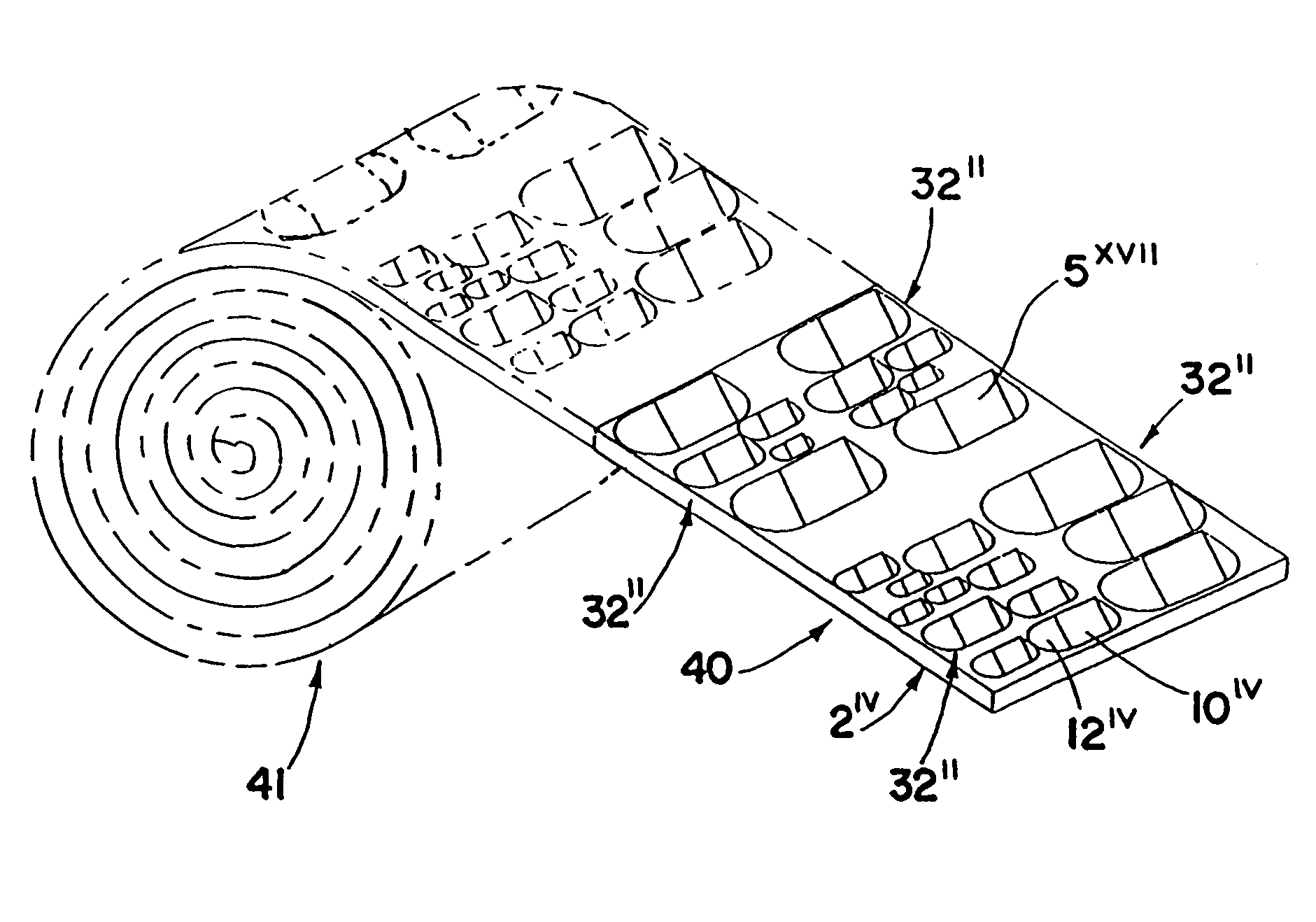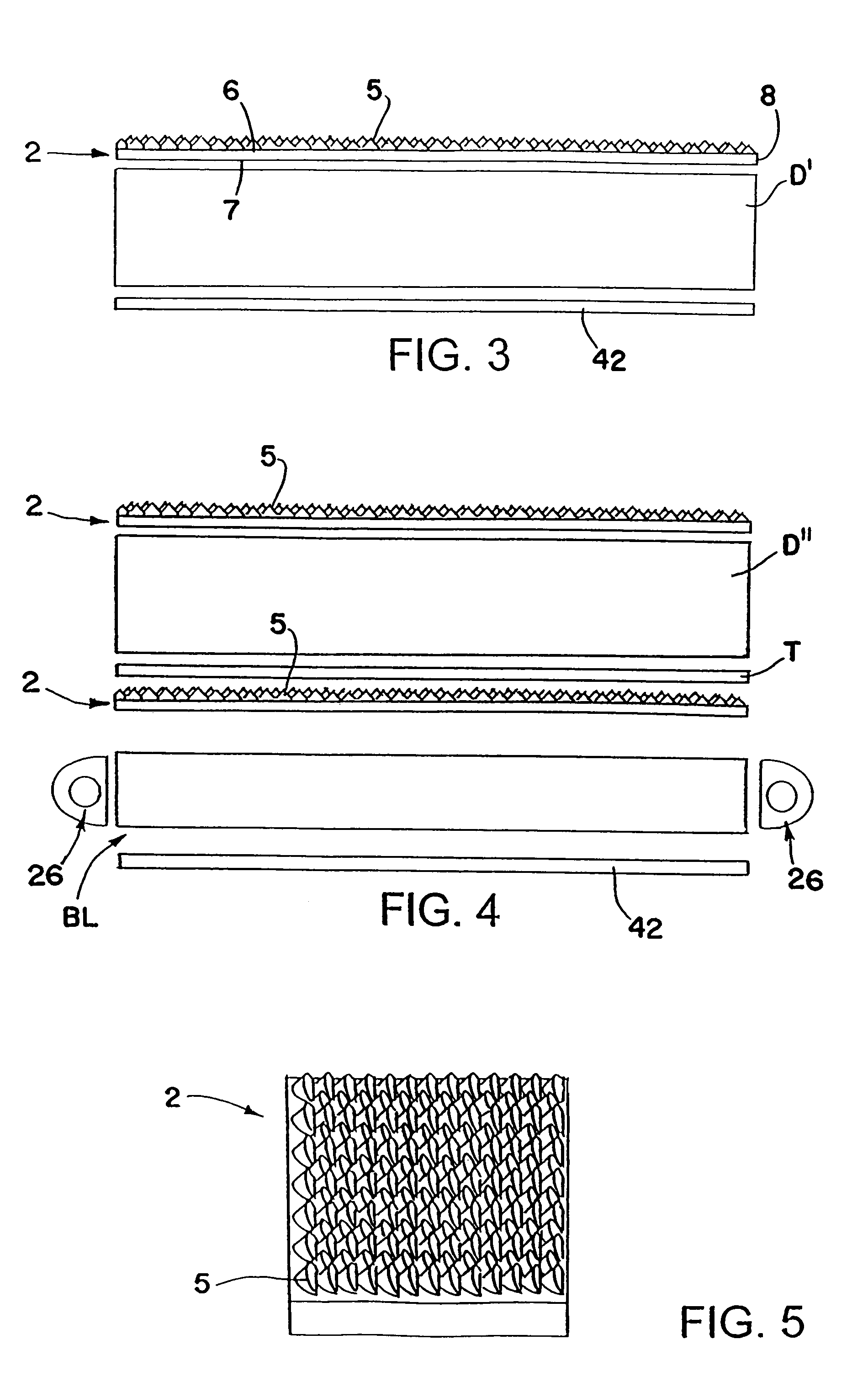Method of selecting a light redirecting film
- Summary
- Abstract
- Description
- Claims
- Application Information
AI Technical Summary
Benefits of technology
Problems solved by technology
Method used
Image
Examples
Embodiment Construction
[0039]FIGS. 1 and 2 schematically show one form of light redirecting film system 1 in accordance with this invention including a light redirecting film 2 that redistributes more of the light emitted by a backlight BL or other light source toward a direction more normal to the surface of the film. Film 2 may be used to redistribute light within a desired viewing angle from almost any light source for lighting, for example, a display such as a liquid crystal display, used in laptop computers, word processors, avionic displays, cell phones, PDAs and the like, to make the displays brighter. The liquid crystal display can be any type including a transmissive liquid crystal display D as schematically shown in FIGS. 1 and 2, a reflective liquid crystal display DI as schematically shown in FIG. 3 and a transflective liquid crystal display DII as schematically shown in FIG. 4.
[0040]The reflective liquid crystal display D′ shown in FIG. 3 includes a back reflector 42 adjacent the back side fo...
PUM
 Login to View More
Login to View More Abstract
Description
Claims
Application Information
 Login to View More
Login to View More - R&D
- Intellectual Property
- Life Sciences
- Materials
- Tech Scout
- Unparalleled Data Quality
- Higher Quality Content
- 60% Fewer Hallucinations
Browse by: Latest US Patents, China's latest patents, Technical Efficacy Thesaurus, Application Domain, Technology Topic, Popular Technical Reports.
© 2025 PatSnap. All rights reserved.Legal|Privacy policy|Modern Slavery Act Transparency Statement|Sitemap|About US| Contact US: help@patsnap.com



